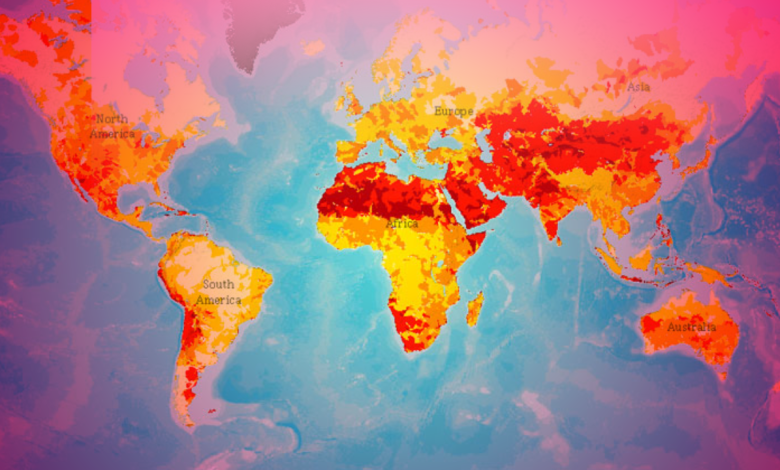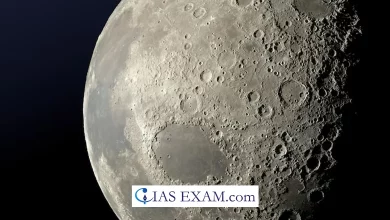Daily Current Affairs for UPSC
Aqueduct Water Risk Atlas
Syllabus- Environment and Ecology [GS Paper-3]

Context- The World Resources Institute (WRI) Aqueduct Water Risk Atlas has released new data.
Key Highlights
- The World Resources Institute is a global non-profit research organization founded in 1982.
- It uses science-based approaches to work globally and in target countries to address critical human needs; to protect and restore nature; stabilize the climate and create more sustainable communities.
- It aims to fundamentally change the way the world produces food, uses energy and designs its cities to create a better future for all.
- Aqueduct’s global water risk mapping tool helps companies, investors, governments and other users understand where and how water risks and opportunities are emerging globally.
What is water stress?
- Water stress is the relationship between water demand and renewable energy, which measures the competition for local water resources.
- A country facing “extreme water scarcity” means it uses at least 80% of its available supply, “severe water stress” means a country loses 40% of its supply.
Countries with facing water stress
- 25 countries, home to a quarter of the world’s population, face extreme water stress every year and regularly use almost all available water resources.
- Even a short-term drought puts these places at risk of running out of water, sometimes forcing governments to turn off the taps.
- At least 50% of the world’s population – about 4 billion people – live in extremely stressful conditions for at least one month of the year.
- The five countries most affected by the floods are Bahrain, Cyprus, Kuwait, Lebanon, Oman and Qatar.
- The regions most affected by water stress are the Middle East and North Africa, where 83% of the population is exposed to very high water stress, and South Asia, where 74% are exposed.
Causes of global water stress
- Globally, the demand for water exceeds the supply.
- Globally, demand has more than doubled since 1960. Demand for water is often driven by growing population and industries such as irrigated agriculture, livestock, energy production and manufacturing.
- At the same time, lack of investment in water infrastructure, unsustainable water use policies, or increased variability due to climate change can affect available water supplies.
Concern
- By 2050, another billion people are expected to live under extreme water stress, even if the world limits global temperature increases to 1.3-2.4 degrees by 2100.
- Global water demand is expected to grow by 20-25 percent.
- For the Middle East and North Africa, this means that by 2050, 100% of the population will be under very high water stress.
- The biggest change in water demand between now and 2050 will occur in sub-Saharan Africa.
- By 2050, the demand for water in sub-Saharan Africa is predicted to soar by 163 percent, 4 times faster than in Latin America.
- According to Aqueduct data, 31 percent of global GDP will face severe water shortages by 2050, up from 24 percent of global GDP in 2010.
- Just four countries – India, Mexico, Egypt and Turkey – will account for more than half of the GDP in 2050. Water shortages can cause industrial disruptions, power outages and agricultural production losses.
- If better water management policies are not implemented, the loss of GDP in India, China and Central Asia by 2050 could be 7-12 percent and 6 percent, respectively. Global food security is also at risk.
- Already 60% of the world’s irrigated agriculture suffers from very high water stress – especially sugarcane, wheat, rice and maize.
- By 2050, the world will need to produce 56% more food calories than in 2010 – while dealing with increasing water stress and climate-induced disasters such as droughts and floods.
Way Ahead
- Water stress does not necessarily cause a water crisis.
- For example, places like Singapore and the American city of Las Vegas show that societies can thrive even in the harshest conditions, using techniques such as weed control, desalination and wastewater treatment and recycling.
- Solving global water problems will cost the world about one percent of GDP between 2015 and 2030, or 29 cents per person per day.
- Policy initiatives: Countries can improve their water management, promote water efficiency in agriculture, implement integrated water resource management, and improve water infrastructure through nature-based solutions and green infrastructure.
- Policymakers in water-scarce countries should prioritize water-saving energy sources such as solar and wind to avoid water-scarce power outages.
- Strategic debt relief programs: International development banks and other lenders should consider strategic debt relief programs, such as debt relief against commitments to invest in biodiversity or sustainable infrastructure, such as mangrove restoration or wetland protection.
- With these nature-based solutions, it is possible to achieve positive climate and water outcomes in countries that cannot afford to improve water management on their own.
- Cities should develop urban waterproofing action plans, learning from a group of six African cities that are already piloting such approaches.
- Instead of flooding fields, farmers should use more efficient water supply measures, such as switching to water-conserving crops or methods such as sprinkler or drip irrigation.
- Companies should set science-based water targets that are consistent with what science says is “enough” to stay within the Earth’s limits and meet society’s needs, learning from the growing number of companies that have already set such targets.





.png)



